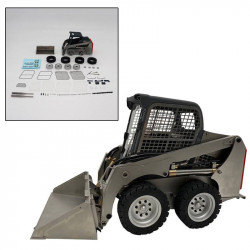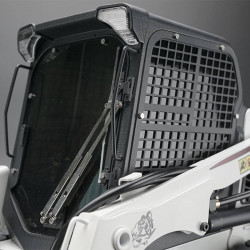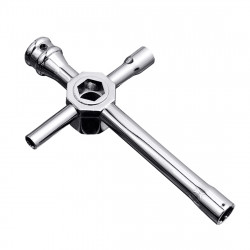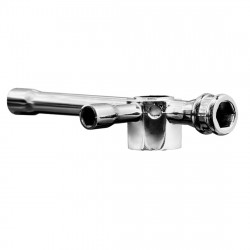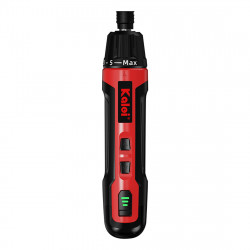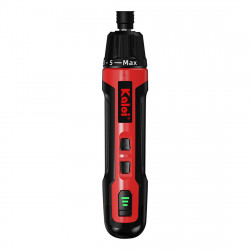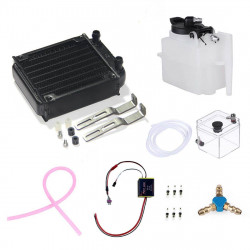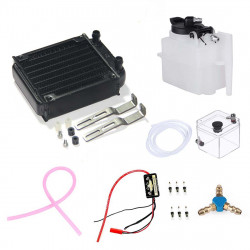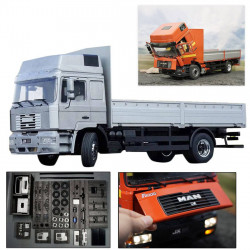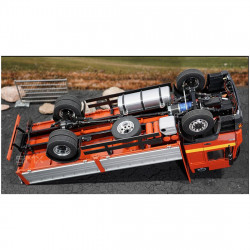
Are RC Jet Planes Legal?
- Planes under 0.55 lbs (250g): There is no need to register; flying them is allowed.
- Planes over 0.55 lbs (250g): FAA registration is required. The registration is suitable for three years and costs $5.
- Planes weighing 55 lbs or more demand more registration and supporting documentation.
This tutorial examines the legality of RC planes, with an emphasis on federal laws, registration requirements, and safe flying practices.
Why It is Important to Know the Law
These rules help prevent model aircraft, such as those powered by RC turbine engines, from obstructing manned aircraft, endangering people on the ground, or violating privacy. By being aware of these laws, model airplane enthusiasts can also fly responsibly and stay out of trouble.
Federal Laws in America
No matter how big or tiny, owning an RC flying plane requires a significant investment. Among the principal regulations set forth by the Federal Aviation Administration (FAA) for RC model aircraft in the United States are the following: you must always be able to see your plane, you cannot fly it higher than 400 feet, you cannot fly within five miles of an airport, and you cannot fly anywhere close to "restricted airspace."
Key Regulatory Bodies: FAA and Their Role
The FAA establishes rules for recreational users and requirements for anyone operating any RC aircraft in the country's airspace.
International Codes of Conduct and Their Repercussions
Agencies in other nations govern different facets of model airplane regulations. Items from the European Aviation Safety Agency (EASA), for instance, might not be included in pertinent American manuals. Modelers must take care to follow local laws when traveling overseas to fly models.
Importance of Knowing and Complying with FAA Rules
The FAA's "Recreational Flyers" Guideline
For recreational flying, the FAA specifies rules, such as staying within 400 feet of the ground and keeping your aircraft within easy sight of you.
False Weights Given to FAA Regulations
Some people believe that small model aircraft are exempt from FAA regulations and that aircraft operated in rural areas are likewise not covered by the agency. Federal law applies to all aircraft models, including remote-controlled jets and tiny gas-powered aircraft.
Do You Have to Register Your RC Model Airplane?
Requirements for Registering an RC Model Airplane
Any model airplane that weighs more than 250 grams (0.55 lbs) or is scheduled to take off manually must be registered with the FAA. Registration is necessary for efficient airspace safety controls.
To Understand Weight Limits: 250g.
Anything over 250g requires registration; however, a plane under that weight may still be exempt. Registration is safer for larger planes.
Registration Procedures for Your RC Jet Plane
How To Be Registered As A Recreational Flyer||(visit)?
Visit the FAA's DroneZone website, fill out the required aircraft and personal data, and buy a $5 registration number. Just put your RC jet aircraft's identification mark or marks wherever they are easily visible.
Some Tips on Successful Registration And Avoiding Fines
Verify that every detail in your registration is correct. Check your registration every year to make sure it hasn't expired. Failure to keep up with your registration will result in issues during a NOAA farm check and significant fines from the government.
Where Can You Fly Your RC Jet Plane In Accordance With Regulations?
Approved flying areas Where there are community-based organizations:
You should be safe if you focus your actions on the FAA or CBO areas. These areas are typically far from airports, populated communities, locations that require exceptional security, etc.
Constraints When Flying In Sensitive Areas
It is forbidden to fly RC jet aircraft—such as those powered by model airplane jet engines—close to airports, military installations, national parks, and other sensitive areas. The penalties include potential criminal prosecution, jail time, and having one's finances significantly depleted by fines.
Obstacles in No-Fly-Zone and Temporary Flight Restricted Areas dry
Meanwhile, A Simple Classification of Airspace and What You Can Do In Each Class Space
Different airspace classes have different regulations. For example, uncontrolled airspaces are rarely, if ever, regulated, while controlled airspace near the airport is exempt from special permissions. Legality is based on familiarity with these classifications. Reword this to read: Safe flying requires familiarity with these classifications.
The Effect of Violation on Restricted Zones
Believe me when I tell you that flying in no-fly zones or during a temporary flight restriction will result in fines; you could be caught doing either or both!| Before you take off, take a moment out of your hectic schedule to check for conditions that are deserving of a fine!
To determine whether you are in a regulated or uncontrolled area of airspace, use apps from LAANC providers or the FAA's free B4UFLY software, which is accessible on iOS and Android devices. The places where remote-controlled planes and RC turbines are permitted and prohibited are now displayed on interactive maps.
Safety Guidance and Best Rules for the RC Jet Plane Enthusiast
FAA's Programme for Safe Flyers in the Area of Recreation
Among other FAA safety regulations, pilots must fly below 400 feet, maintain a visual line of sight with the aircraft at all times, and avoid flying over people, buildings, or moving traffic.
The impact of local and state laws on RC jet planes
When Local Regulations Differ Greatly from Federal Ones
Additional limits may be imposed by state and local legislation, such as prohibiting RC aeromodelling in particular parks or near schools. Always confirm local regulations prior to leaving the ground.
Check With Local Authorities Before You Fly
Visit the websites of your local government or join a community board where members may have some information. If you want to avoid penalties or fines, you must follow the laws in your community.
